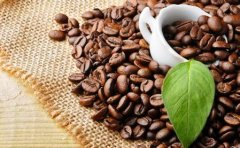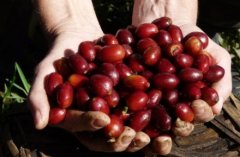Bourbon round beans fragrance French coffee beans history of development
Tibica was the first to land in Central and South America under the company of Holland and France. In terms of genetic richness, it is not a good phenomenon for a single variety to reproduce in a foreign country. fortunately, France has caught up and turned to bourbon, another subspecies of Arabica, which has enriched the coffee gene in Central and South America.
Bourboll, located to the east of Madagascar on the east coast of Africa, covers an area of 2512 square kilometers. it became a French dependency in 1646, named Bourbon to highlight the honors of the French Bourbon dynasty, and changed its name to "Rotlnion" after the French Revolution in 1792.
In 1711, Louis Boivin, a Frenchman, first discovered a native Arabica coffee tree in S ã o Paulo, which is about 0 meters above sea level on the island of Bourbon. When it matured, its skin was not red but brown. At that time, it was called brown fruit coffee. It was later confirmed as a new variety by the famous French botanist Lamarque and named it "Coffea Mauritiana". Bourbon Island is the second place in the world to have native Arabica after Ethiopia. France was delighted to drink it, but found that brown fruit coffee tasted a little bitter.There was no market in France, so sixty mocha round coffees were shipped from Yemen in 1715 to replace bitter brown fruit coffee. This mocha coffee tree is well adapted to the island's climate, and in order to distinguish it from the Dutch "Tibica long bean", the legal person is named "bourbon round bean" (Bourbonrond), or "green top bourbon". In 1724, France exported the first batch of 1700 kg (1 kg = 1 kg) of bourbon coffee, and its production capacity increased to 448000 kg in 1734, but after reaching a peak of 24.44 million kg in 1827, it began to go downhill. Because Bourbon is more remote, it can't compete for Central and South American coffee closer to the European market.

Important Notice :
前街咖啡 FrontStreet Coffee has moved to new addredd:
FrontStreet Coffee Address: 315,Donghua East Road,GuangZhou
Tel:020 38364473
- Prev

Sweet-scented Jamaican Blue Mountain Coffee Coffee
Recently, Jamaica has had an unlucky year, wind and insect disasters have repeatedly hit the island, and the noble Blue Mountain Coffee has been seriously damaged. Second ○○ the second half of the year to the second ○○ eight years, open the new delivery of blue mountain barreled raw beans, to be psychologically accurate, there may be riddled worm-eaten beans, even expensive No. 1 is also hard to escape. Jamaica Coffee Authority (Cofee Indust Board) II ⊙
- Next

Variants of bourbon pointed beans are very popular with boutique coffee beans.
In addition to round beans, bourbon also has pointed beans. In 181○, coffee farmer Leroy of Bourbon Island found that some coffee trees on the estate had become smaller and produced pointed beans, which were obviously different from Bourbon round beans. Confirmed by botanists as a bourbon variety, commonly known as bourbon pointed bean (BourbonPointLl), has become a legendary delicious coffee that drinks too much and sleeps well.
Related
- Beginners will see the "Coffee pull flower" guide!
- What is the difference between ice blog purified milk and ordinary milk coffee?
- Why is the Philippines the largest producer of crops in Liberia?
- For coffee extraction, should the fine powder be retained?
- How does extracted espresso fill pressed powder? How much strength does it take to press the powder?
- How to make jasmine cold extract coffee? Is the jasmine + latte good?
- Will this little toy really make the coffee taste better? How does Lily Drip affect coffee extraction?
- Will the action of slapping the filter cup also affect coffee extraction?
- What's the difference between powder-to-water ratio and powder-to-liquid ratio?
- What is the Ethiopian local species? What does it have to do with Heirloom native species?

